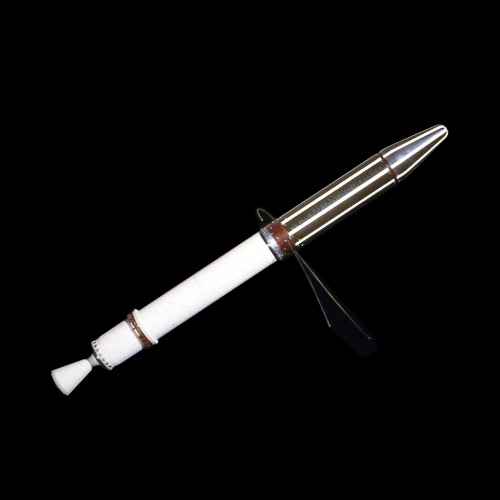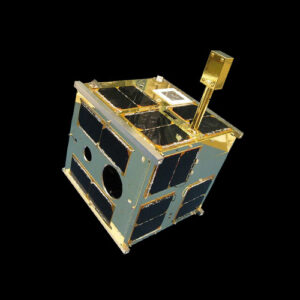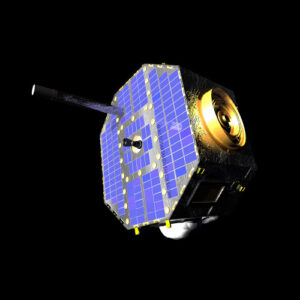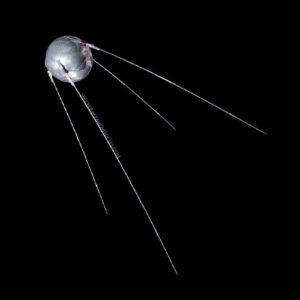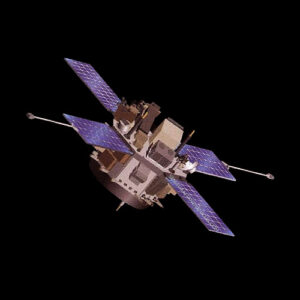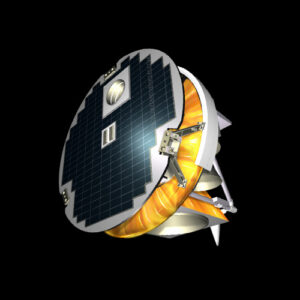Explorer 1, launched by the United States on January 31, 1958, marked the nation’s first successful entry into Earth’s orbit. Developed in response to the Soviet Union’s launch of Sputnik 1, Explorer 1 demonstrated America’s capability to contribute to the burgeoning space race and paved the way for future scientific discoveries. Equipped with innovative scientific instruments, Explorer 1 played a crucial role in uncovering the existence of the Van Allen radiation belts, providing valuable insights into Earth’s magnetosphere and radiation environment.
Design and Construction
Explorer 1 featured a cylindrical design, measuring approximately 203 centimeters in length and 15 centimeters in diameter. The satellite’s main body was constructed of lightweight aluminum alloy, housing scientific instruments, batteries, and radio transmitters within its compact structure. Its exterior was adorned with four whip antennas for communication with ground stations.
Developed by the Jet Propulsion Laboratory (JPL) and the Army Ballistic Missile Agency (ABMA), Explorer 1 incorporated a cosmic ray detection experiment designed by James Van Allen and his team. This Geiger-Müller tube detector was instrumental in detecting the presence of radiation belts surrounding Earth, subsequently named the Van Allen radiation belts in honor of the lead scientist.
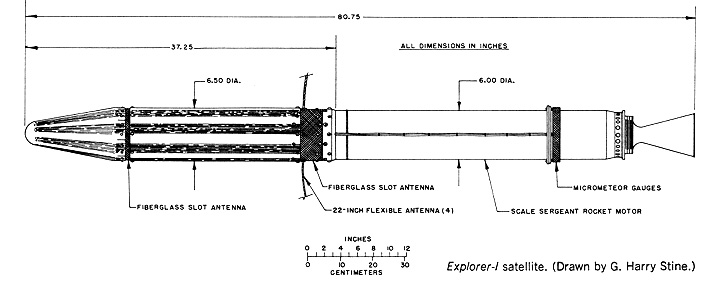
Mission Objectives
The primary objective of Explorer 1 was to investigate cosmic rays and micrometeorite impacts in Earth’s upper atmosphere. This mission was a response to the Soviet Union’s successful launch of Sputnik 1, the world’s first artificial satellite, which sparked the space race between the two superpowers during the Cold War era.
Secondary objectives included studying the charged particle environment surrounding Earth and transmitting scientific data back to ground stations. To do this, Explorer 1 carried scientific instruments, including a cosmic ray detector designed by Dr. James Van Allen, which made groundbreaking discoveries regarding the existence of radiation zones encircling the Earth.
The spacecraft’s objectives also included gathering data on micrometeoroid impacts, temperature variations, and atmospheric density at high altitudes.
Launch and Deployment
Explorer 1 was launched atop a Juno I rocket from Cape Canaveral Air Force Station, Florida.
As Explorer 1 orbited the Earth, the cosmic ray detector collected data on the intensity and distribution of cosmic radiation in the vicinity of our planet. This information was then transmitted to ground stations via radio signals. Ground-based tracking stations received and recorded these signals, allowing scientists to analyze the data in real-time and gain insights into the composition and behavior of cosmic rays in Earth’s vicinity.
The successful deployment of Explorer 1 not only expanded our understanding of the cosmos but also ignited a new era of space exploration, inspiring generations to reach for the stars.
Technical Specifications
- Dimensions: Approximately 203 centimeters in length and 15 centimeters in diameter.
- Weight: Approximately 14 kilograms.
- Power Source: Silver-zinc batteries provided electrical power for the satellite’s systems.
- Instruments: Explorer 1 carried a cosmic ray detection experiment, consisting of a Geiger-Müller tube detector and associated electronics.
Current Status
Explorer 1’s successful mission marked the United States’ entry into the space age and laid the foundation for future space exploration endeavors, shaping our understanding of the space environment and paving the way for subsequent scientific missions.
The mission lasted for approximately four months, during which it transmitted valuable scientific data back to Earth. The discovery of the Van Allen radiation belts by Explorer 1 revolutionized our understanding of Earth’s magnetosphere and its interaction with cosmic radiation.
Despite its relatively short operational lifespan, Explorer 1’s legacy endures as a testament to America’s pioneering efforts in space exploration. Its success paved the way for subsequent missions and advancements in space science and technology.
